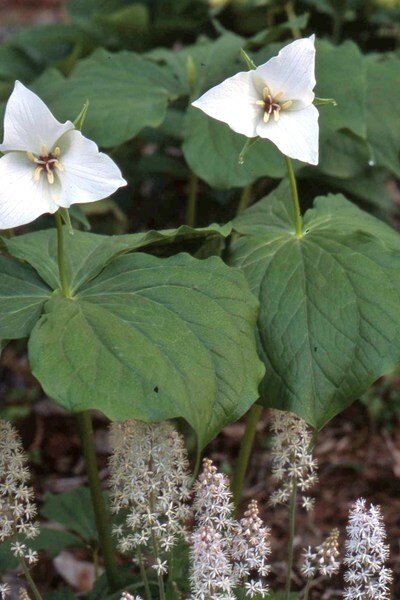Walking in a woodland garden
Loading...
There are many myths about woodland plants. One I hear often is how native woodland perennials are "pretty little weeds that soon disappear." As with most myths, there is a kernel of truth in there, but a kernel does not make an entire ear of corn.
Some, but not all, of our native woodland plants are ephemeral. The ones that are emerge in late winter while the soil is just beginning to warm, then bloom, set seed, and go dormant until the next spring.
There is a reason for this behavior. The ephemeral plants are filling the niche that exists before trees and shrubs leaf out, blocking the light and taking up available moisture and nutrients. Usually the early-blooming plants are dormant by July.
Effective design with ephemerals
There are several ways to effectively use these gems of the forest floor. My preference is to pair up ephemerals with plants that bloom at the same time, but do not go dormant early, as the ephemerals do.
Among my favorites to use as companions are Phlox stolonifera (creeping phlox) and trilliums. This species of phlox is green all 12 months of the year and looks great with trilliums coming up through the mat of fresh green.
There are 40 species of trillium to choose from and many colorful cultivars of creeping woodland phlox to select from. My favorite is white blooming trillium [see photo at top] paired with Sherwood Purple creeping phlox.
Other such selections are Tiarella, or foamflower, in drifts with your trillium of choice [see photo at top], or perhaps Uvularia grandiflora, Merrybells, which has yellow blooms, grown with Mertensia virginica, Virginia bluebells, which quickly disappear while merrybells remains until frost. It's a classic blue and yellow color combination. [See second photo at left. click on arrow at right base of first photo to see the second one.]
Walk and see for yourself
My inspiration came from hiking through a woodland hillside and seeing drifts of color sweeping around trees and boulders, completely hiding broken branches and leaf litter.
Hundreds of thousands of tiny flowers such as Delphinium tricorne (dwarf larkspur) were growing with companions of trilliums, Jack-in-the-pulpit (Arisaema triphyllum), anemones, Dicentra such as Dutchman's Breeches, along with ferns unfurling.
The list could, and does, fill numerous woodland gardening guide books, and possibly your shaded garden, as it does in mine. Spring beauty that isn't ephemeral.
-----
Gene Bush, a nationally known garden writer, photographer, lecturer, and nursery owner, gardens on a shaded hillside in southern Indiana. His website is www.munchkinnursery.com. He also writes the Garden Clippin's Newsletter. To read more by Gene here at Diggin' It, click here.








